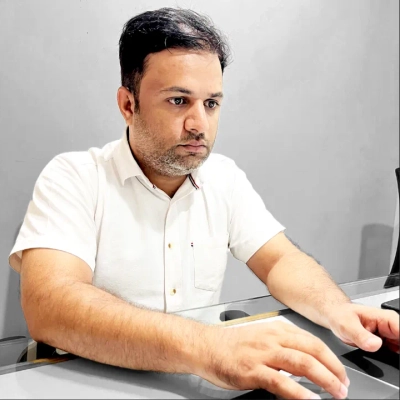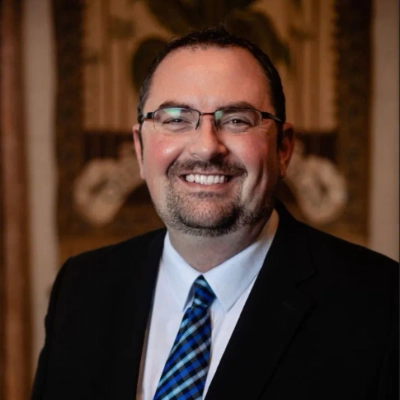10 Lessons From Facing Confirmation Bias in Beliefs and Actions
Confirmation bias silently shapes beliefs and decisions in ways that can undermine both personal growth and organizational success. This article presents ten practical lessons for recognizing and countering this cognitive trap, drawing on insights from experts in psychology and decision-making. Each strategy offers actionable methods to challenge assumptions, invite dissent, and build more resilient thinking systems.
Seek Opposing Viewpoints With Curiosity
Like, once I was confident enough that multitasking made me more productive. As I was paying attention to articles that were in my favour. It led me to face classic confirmation biases. I was searching for validations, not truth.
So, after missing a few deadlines and proofreading the same sentence three times. Literally, while multitasking made me realise, switching tasks actually reduces efficiency. A well-conducted research study showed the same. In reality, it taught me that my brain loves flattery more than facts.
To reduce these confirmation biases, it is helpful to deliberately seek out opposing viewpoints. Questioning our gut reactions helps, too, especially when something really feels right. Engaging with people who disagree also forces us to confront blind spots. In short, the cure for confirmation bias is curiosity, humility, and the occasional willingness to be proven wrong, which, unfortunately, humans hate as much as I hate listening to your music playlists.

Invite Diverse Perspectives and Challenge Conclusions
I have seen confirmation bias in action during a marketing campaign analysis. I was convinced a certain ad format was performing best because it matched my initial theory. I looked at the data that supported that and ignored the metrics that showed another format was driving more conversions. When a colleague challenged my conclusion I went back to the data and realised my bias had skewed my interpretation.
To combat confirmation bias it helps to actively seek out disconfirming evidence, invite diverse perspectives and standardise decision making frameworks that rely on data over intuition. Questioning your assumptions and encouraging team debate can turn bias into an opportunity for deeper learning and better decision-making.

Build Systems That Force Self-Argument
Confirmation bias is one of the quietest career saboteurs because it doesn't feel like a bias; it feels like responsible due diligence. When we're considering a big move—like hiring a key team member or taking a new job—we instinctively start gathering data. The trap is that we're often not looking for truth, but for validation. We develop a gut feeling about a candidate or an opportunity, and our research becomes an exercise in proving that feeling right, rather than rigorously testing if it's sound.
I learned this lesson the hard way while building a team. I interviewed a candidate who was charismatic and gave all the right answers, and I decided within the first fifteen minutes that they were the one. For the rest of the interview process, my questions were subconsciously designed to confirm that initial judgment. I'd ask leading questions like, "Tell me about how you successfully led that project," instead of a more neutral, "Walk me through that project, from start to finish." The most dangerous part of the bias wasn't that I was ignoring contradictory evidence; it was that I had created a process that prevented that evidence from ever surfacing in the first place.
To mitigate this, I've found it's not enough to simply "be open-minded." We have to actively build systems for disagreement. For instance, when my team is leaning heavily toward a particular candidate now, I assign one person the specific role of building the most compelling case *against* hiring them. Their job isn't to be difficult, but to articulate the risks and downsides we might be glossing over. A few years ago, this process saved us from hiring someone who was a brilliant individual contributor but had a history of creating friction on teams—a detail my initial enthusiasm had completely overlooked. It's a reminder that the goal isn't just to find people who will argue with you, but to create a system that forces you to argue with yourself.
Enforce Verifiable Proof of Failure Protocol
The single biggest example of how confirmation bias affected my opinions was my initial belief that a specific heavy duty synthetic shingle underlayment was inferior to traditional felt underlayment. The conflict was the trade-off: I had built my career on the verifiable quality of felt (my structural assumption), but the new synthetic material offered better wind-load resistance. When a job failed due to water intrusion, I immediately blamed the new material, a massive structural failure in objective analysis.
My confirmation bias forced me to selectively seek out reports and anecdotes from other foremen who complained about the synthetic material, while ignoring the verifiable data showing that its failure was caused by a specific, known, hands-on installation error, not the material itself. I traded verifiable truth for comforting confirmation of my bias. This threatened the structural integrity of my entire diagnostic process.
We can mitigate the impact of this bias by enforcing the Hands-on "Verifiable Proof of Failure" Protocol. This dictates that when a system fails, you must actively seek out three specific, non-negotiable data points that contradict your initial assumption. I was forced to audit installation videos and manufacturer specs, which proved the material was structurally sound and that the failure was human-induced. The best way to mitigate this bias is to be a person who is committed to a simple, hands-on solution that prioritizes rigorous, structural disconfirmation over subjective belief.
Assign Devil's Advocate During Reviews
Confirmation bias surfaced most clearly during an evaluation of new health monitoring software. I initially favored a platform recommended by peers and subconsciously filtered data to support that choice—overlooking reports that highlighted integration issues. Once the implementation faltered, it became obvious that early skepticism could have prevented setbacks. Mitigating this bias requires structured decision-making: gathering opposing viewpoints intentionally, assigning a "devil's advocate" during reviews, and basing final judgments on standardized metrics rather than anecdotal confidence. Creating space for dissenting opinions doesn't slow progress; it strengthens outcomes by challenging assumptions before they solidify into costly decisions.

Separate Evidence From Emotion in Decisions
At RGV Direct Care, we assumed that during the initial stages, patients would not appreciate online visits. Everything was based on that belief, the way we made appointments, the way we made our communications. When a few patients started to demand check-ins online, we ignored it as a temporary trend. The bias was there due to the assumption that quality care involved a physical presence, and we sublimated the feedback that contradicted the assumption.
As we ultimately examined patient satisfaction data, the outcomes were opposite to our assumption. Visits on the internet did not decrease trust or outcomes, but made them more accessible and continuous. The very fact of that data confronting us compelled us to keep evidence and emotion apart. Today, to reduce the confirmation traps, we have erected purposeful stopstations in the decision-making process, in the form of peer reviews, patient survey, and periodic data audits. In every step we are reminded that just as thought we have to keep medicine open to correction. Growth is not about being correct but rather about being able to rethink.

Slow Down Bias Through Deliberate Discomfort
Early in my career, I was convinced that longer patient visits automatically led to better outcomes. I gathered stories, feedback, and even selective data that reinforced this belief while ignoring instances where shorter, focused encounters were equally effective. It wasn't until I transitioned into Direct Primary Care that the bias became clear. I began to notice patients improving not because of visit length, but because of access, trust, and continuity. My attention had been fixed on one variable when the real value lay in the relationship itself.
Mitigating confirmation bias requires deliberate discomfort. Seeking out data that contradicts what feels intuitively right helps reveal blind spots. I started reviewing patient satisfaction surveys with colleagues who held different viewpoints and asked them to interpret the results before I did. That practice shifted my focus from defending my perspective to understanding theirs. The goal isn't to eliminate bias—it's to slow it down long enough for reflection to do its work.

Create Disconfirmation Checklist Before Major Decisions
At the beginning of my career in SEO, I held on to the principle that the backlinks were the most important ranking factor by all. I just wanted to find data and case studies that confirmed that opinion and neglected the facts that indicated the increasing role of the content quality and user signals. The reason why campaigns failed to perform was that strategy was taken, not analyzed. The breakthrough was made on running controlled tests between high-quality material with no back links and low quality optimization pages with powerful link profile. The findings proved my assumptions and altered my perceptions of the ranking factor assessment. To overcome confirmation bias now, I have developed a specific strategy of creating a disconfirmation checklist to major decisions. I seek information that would make me wrong before taking an action and request my team members to discuss the conclusion and not the approach. Incitation to dissent and use of objective measures, rather than intuition keeps the insights down-to-earth and decisions unquestionably information-driven.

Pursue Alternative Explanations Through Structured Review
At the beginning of my career, I thought that the old roofing systems did not give in primarily due to wear and tear of materials but due to poor workmanship. That was based on years of observation of shingles and flashing worn out. However, during my review of inspection records, involving hundreds of projects, I found that there is a pattern, many of these old roofs had not reached their age due to a problem with ventilation or underlayments that were not put into consideration at the time of installation. It was the partial picture that was formed on the basis of visible evidence that proved the assumption that I already had in place. It was through the attempt to find alternative explanations and information that disproved my assumptions that the correction came. Structured review and opposition are necessary in decision-making to reduce confirmation bias. The introduction of team members whose roles are different to examine a problem compels emerging views to be revealed. It is not aimed at doing away with bias but creating mechanisms that do not reduce the way we would comprehend reality.

Institutionalize Formalized Challenge Teams for Strategy
Confirmation bias once significantly impacted my belief regarding the superiority of a single supplier for a critical heavy duty component—a specific series of OEM Cummins actuators. Because that supplier had delivered flawless quality for years, I began subconsciously dismissing incoming reports from our Quality Control team that indicated minor, but increasing, defects in newer batches. I was selectively hearing data that supported my pre-existing belief in their flawless reliability.
As Operations Director, this bias nearly led to a major failure in our outbound quality assurance. I was slowing down the process of finding and certifying a secondary source, convinced the issues were anomalies, not systemic. The pivotal moment was realizing that my belief was based on past performance, not current data. We corrected the issue by immediately implementing a dual-sourcing mandate for all critical components, like the Turbocharger.
The primary way we mitigate this bias is through the institutionalization of formalized Devil's Advocacy and data review. As Marketing Director, I enforce a policy where all major strategic decisions—such as product selection or large marketing spend—must be reviewed by a designated "challenge team" whose sole purpose is to find data that disproves our core assumption. This forces the team to actively seek contradictory evidence, shifting the operational standard from "I believe this is true" to "I must prove this is false." This rigorous, structured skepticism is essential for maintaining the integrity of our decisions, just as our 12-month warranty demands.




